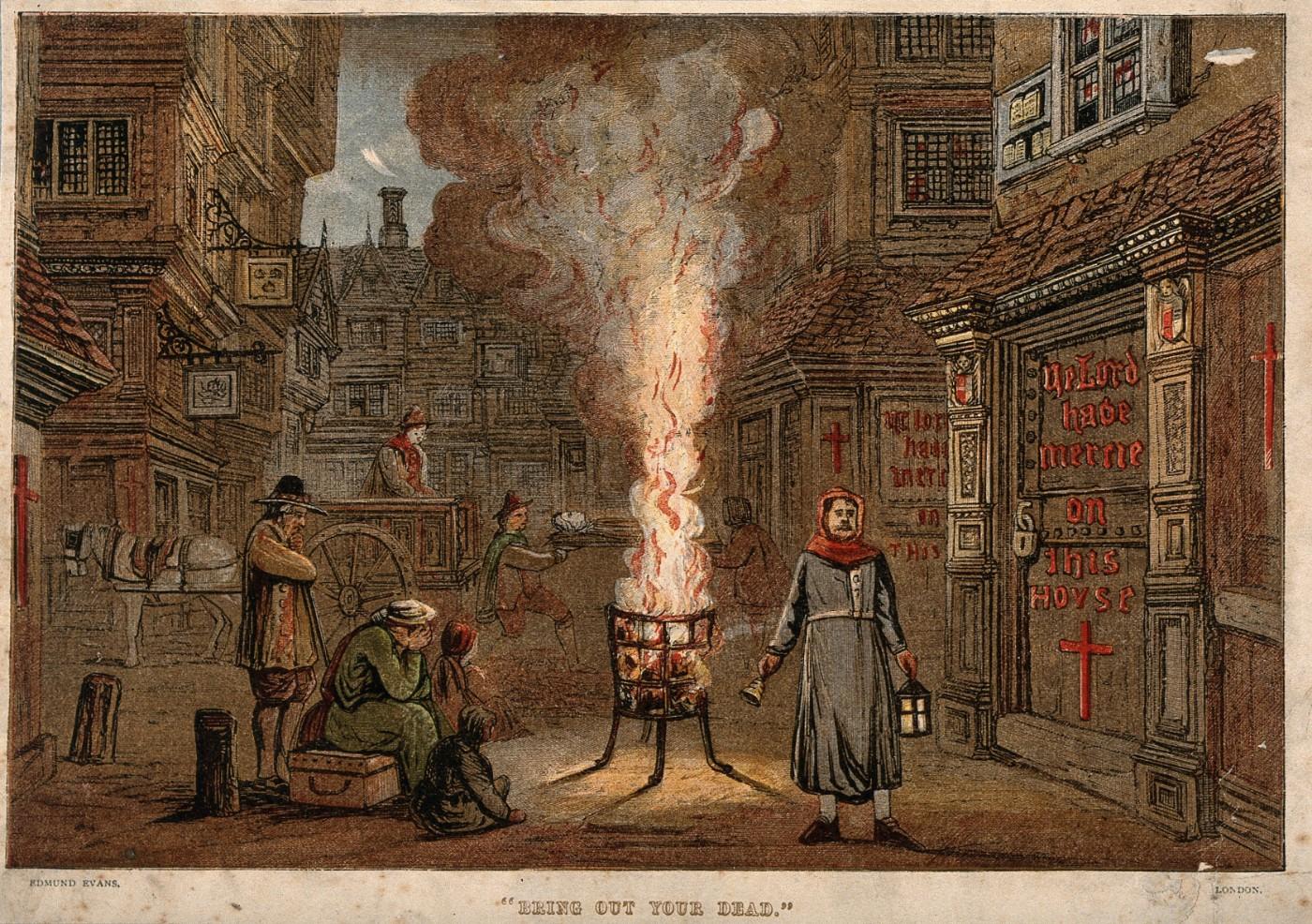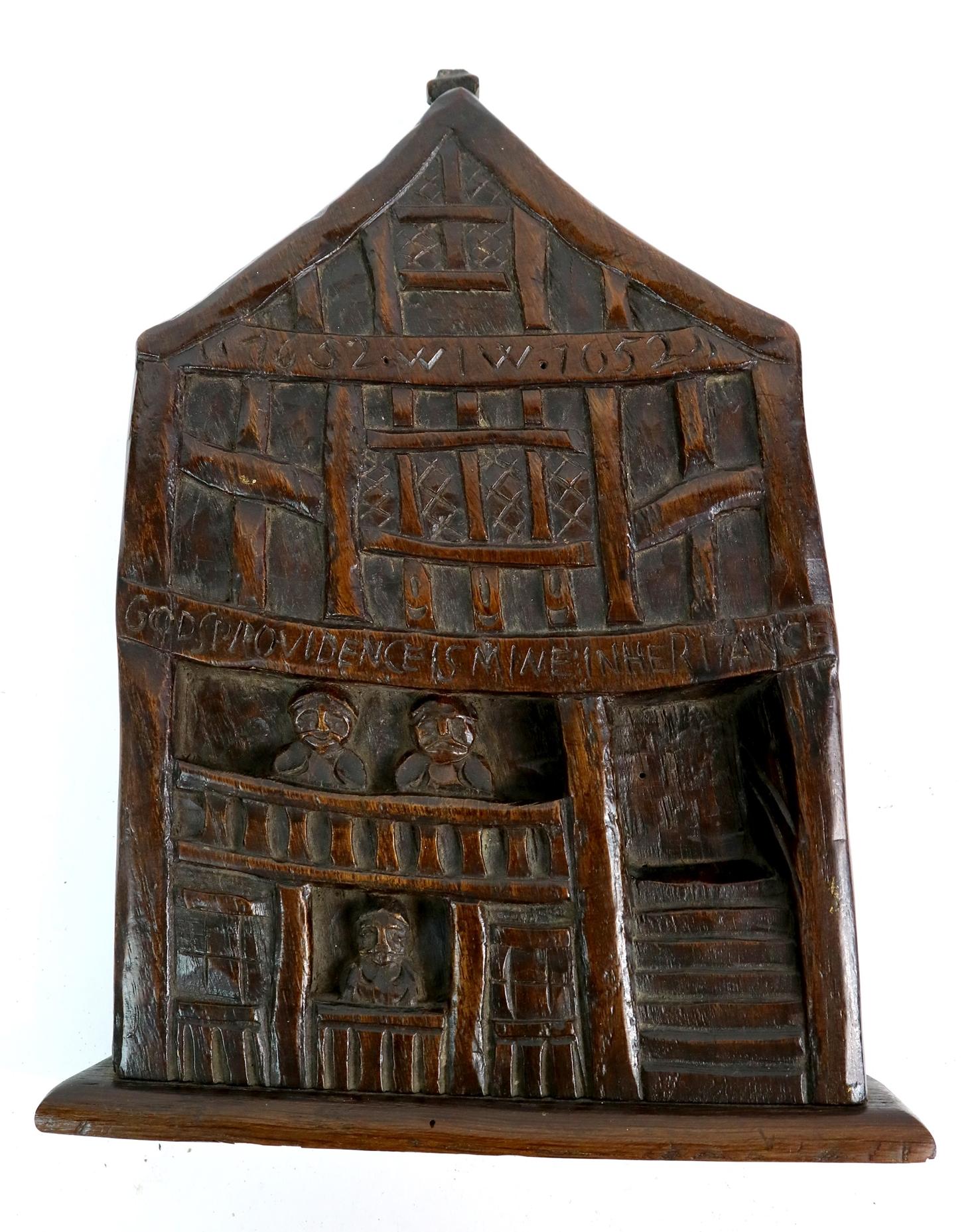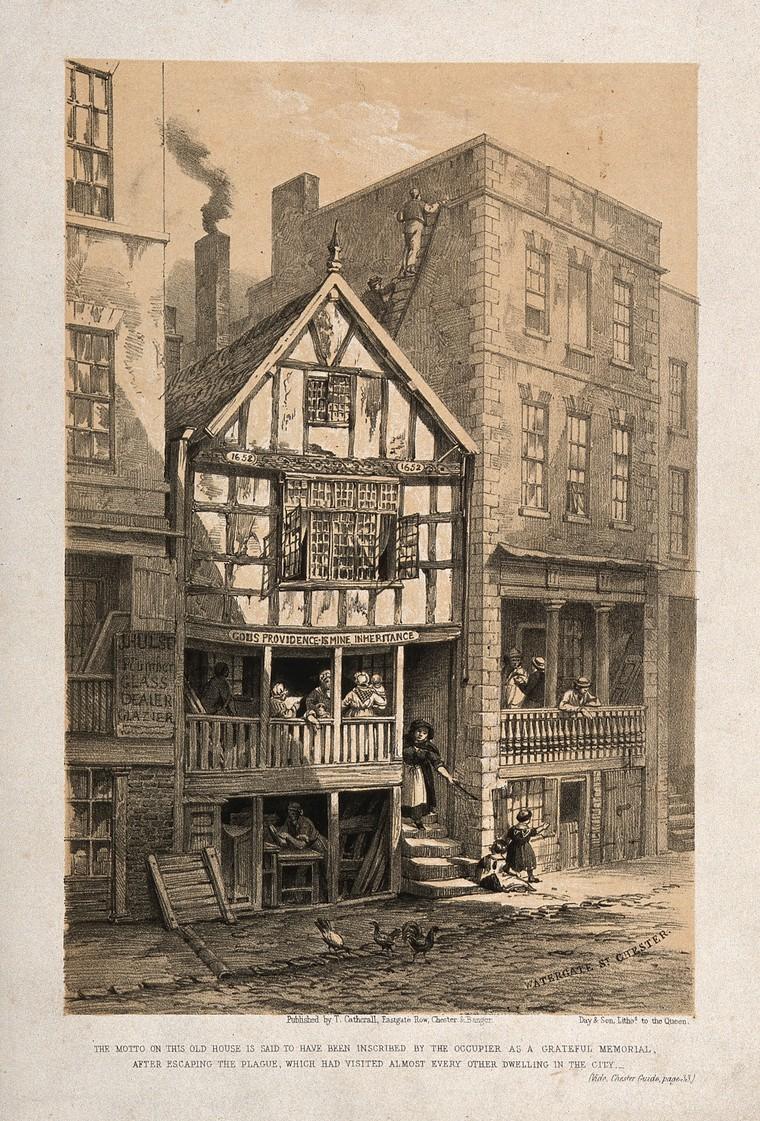So it was in the case of one Chester house, spared during the 1647-48 epidemic. Although the original structure was destroyed only a few years later, the divine detour around this plot of land was still significant enough in the minds of the rebuilders to inscribe a message on the new home’s front-facing timber beam, reading: “Gods Providence Is Mine Inheritance.”

A street during the plague in London with a death cart and mourners. "Bring out your dead." Edmund Evans. London.
As bubonic plague ravaged seventeenth-century England, the afflicted would find a red cross painted on their door, a warning for visitors to stay out. If, on the other hand, a house had been shown mercy while the rest of the neighborhood succumbed–a matter of happenstance more than anything since no one knew the first thing about disease transmission or treatment–it was cause for decorative commemoration.

God’s Providence House Plaque

A house on Watergate Street in Chester, said to be one of the few that was not visited by the plague.
Mementos were also made, such as this seventeenth-century carved oak panel depicting the façade of what has become known as God’s Providence House, which is headed to auction in Shrewsbury later this week. In appearance, the approximately 10” x 6 ½” plaque borders on folk art with its primitively chiseled figures. It is estimated to sell for £800-1,200 ($1,000-1,500).
“I was aware of the story and of the house of which this carving is an illustration, but I could not be sure if there was a direct link until I saw the date 1652 carved into the panel,” said Jeremy Lamond, director of Halls Fine Art. “That is the precise date when the house was rebuilt. Then I was sure that this dedication panel and its thanks to divine providence was the real thing, an object that once decorated the ‘Gods Providence House’ at 9 Watergate Street, Chester.”
Much updated but still Tudoresque, God’s Providence House still stands, and is, we presume, still plague-free.




























